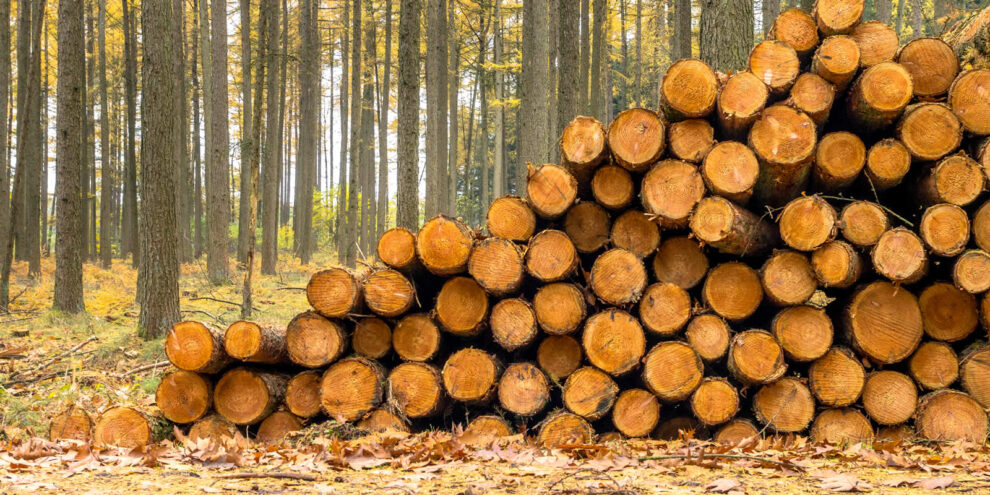Investing in wood-using mills and timberlands requires having a strategy about how to “feed” the mill or how to “market” the trees. These efforts raise questions about the relative value of vertical integration, where one firm owns mills and forests, versus alternatives such as wood supply agreements or other arrangements.
Timberland Ownership
Since the 1980s, most public, integrated forest industry firms in the U.S. divested their timberlands. This includes household names such as International Paper (IP) and (now private) Georgia-Pacific, and firms that split manufacturing from timberlands, such as Rayonier (RYN) and Rayonier Advanced Materials (RYAM). Remaining integrated firms include, for example, the timber REITs Weyerhaeuser (WY) and PotlatchDeltic (PCH), which own mills in taxable subsidiaries.
The motivation to divest started when firms accumulated high levels of debt during a period of forest industry consolidation and penciled out the tax disadvantages associated with C-corporate structures for timberland ownership. Selling timberlands provided a ready means to generate cash, pay down debt, and “unlock” shareholder value.
The strategic question for wood-using firms was “are timberlands simply an owned source of raw material or do they represent a competitive advantage?” Previous research suggests the primary economic benefits of timberlands ownership – from inflation hedging to diversification to wealth preservation – are best realized within an investment portfolio. Operationally, timber markets had become more liquid, allowing mills to meet most needs without “fee” ownership.
That said, timber markets are uniquely local; each situation differs. Forest ownership offers wood procurement managers opportunities to diversify and optimize a log buying strategy. The primary operating issue is the tradeoff between minimizing the cost of delivered raw material and maximizing control over the volume of supplies needed.
Wood Supply Agreements
A wood supply agreement is a contractual obligation by a supplier to provide agreed-to-volumes of wood to a buyer, who commits to buying this raw material at the contract price. Forest industry managers use supply agreements to (1) help manage the costs and volumes of wood raw materials needed at their plants and (2) to mitigate potential impacts on forestry and procurement operations from timberland ownership changes.
While wood supply agreements reduce uncertainty for buyers and sellers of logs and trees, our experience has been that, at times, they can be an inconvenience to forest buyers and wood sellers. In supporting price mechanisms and arbitration proceedings in the past, we found that the following three criteria include the proper principles for wood or fiber supply agreements:
- Reflects market prices: Wood prices from any agreement should approximate “arms-length”, market-based prices. While the contract price may deviate from the market price at any given time, prices paid over time should minimize the perceived and actual missed opportunities of the seller bypassing other customers and markets.
- Easy to implement and to use: The approach should be easy to understand, easy to explain, and easy to use. Complex pricing mechanisms do not create value for business owners or investors.
- Retains flexibility: At times, the parties may feel the pricing from the agreement requires an adjustment. Rather than disregard the model, the terms should allow and encourage a sit down to work things out through a “reset” or negotiated adjustment.
In theory, the most direct way to answer the timberland ownership question for a manufacturer is to measure the per-unit cost of growing timber, and then benchmark it against the price of open-market purchases of wood. In practice, estimating the cost of acquiring timberland plus growing multiple forest products (pulpwood and grade) as compared to procuring (or selling) these products in the open market reflects a multi-dimensional, head-splitting exercise. For a manufacturer, the priorities are sustainable, low delivered cost raw materials. As such, this often elevates the “cost-versus-control” question of focusing on approaches that secure volumes – whether through supply agreements or hiring more foresters or owning trucks or other components of the supply chain – rather than committing the type of capital required to acquire timberlands.
This content may not be used or reproduced in any manner whatsoever, in part or in whole, without written permission of LANDTHINK. Use of this content without permission is a violation of federal copyright law. The articles, posts, comments, opinions and information provided by LANDTHINK are for informational and research purposes only and DOES NOT substitute or coincide with the advice of an attorney, accountant, real estate broker or any other licensed real estate professional. LANDTHINK strongly advises visitors and readers to seek their own professional guidance and advice related to buying, investing in or selling real estate.










Add Comment